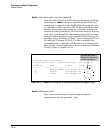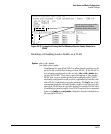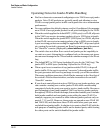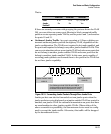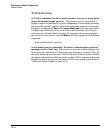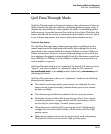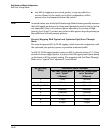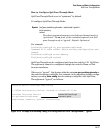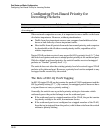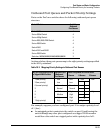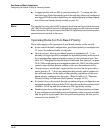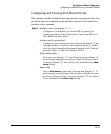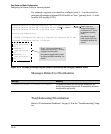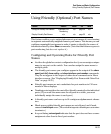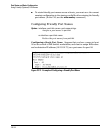
10-28
Port Status and Basic Configuration
Configuring Port-Based Priority for Incoming Packets
Configuring Port-Based Priority for
Incoming Packets
When network congestion occurs, it is important to move traffic on the basis
of relative importance. However, without prioritization:
■ Traffic from less important sources can consume bandwidth and slow
down or halt delivery of more important traffic.
■ Most traffic from all ports is forwarded as normal priority, and competes
for bandwidth with all other normal-priority traffic, regardless of its
relative importance.
Tagged VLAN packets received carry a specific 802.1p priority level (0 - 7) that
the switch recognizes and uses to assign packet priority at the outbound port.
With the default port-based priority, the switch handles received untagged
packets as “Normal” (priority level = 0).
The switch does not alter the existing priority level of received tagged VLAN
packets at the inbound port. However, a priority level can be assigned to any
untagged traffic received by the switch.
The Role of 802.1Q VLAN Tagging
An 802.1Q-tagged VLAN packet carries the packet’s VLAN assignment and the
802.1p priority setting (0 - 7). (By contrast, an untagged packet does not have
a tag and does not carry a priority setting.)
Generally, the switch uses a packet’s priority setting to determine which
outbound queue the packet belongs in on the outbound port.
■ If the outbound port is a tagged member of the VLAN, the packet carries
its priority setting to the next, downstream device.
■ If the outbound port is not configured as a tagged member of the VLAN,
then the tag is stripped from the packet, which then exits from the switch
without a priority setting.
Feature Default Menu CLI Web
Assigning a priority level to traffic on the basis
of incoming port
Disabled n/a page 10-31 n/a



